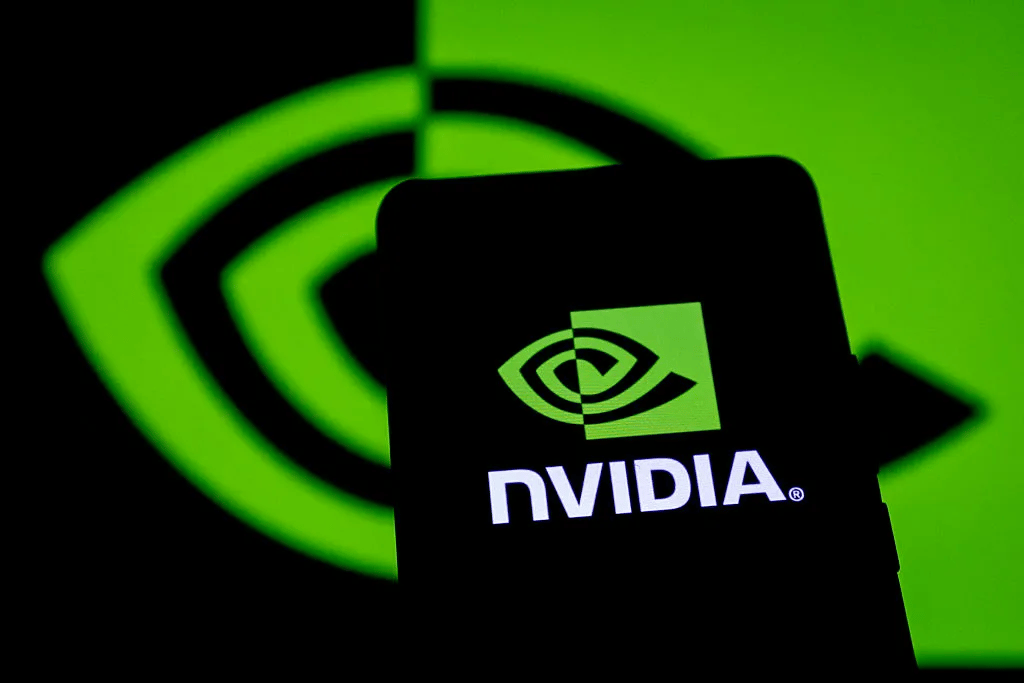- The Neural Frontier
- Posts
- NVIDIA is the first public company worth $5 trillion 💰
NVIDIA is the first public company worth $5 trillion 💰
Also: OpenAI completes its for-profit shift, while Canva launches its creative operating system 🎨.

Guess who else has an AI browser now? Yep, Microsoft. And that’s not even today’s headline.
Forward thinkers, welcome to another issue of the Neural Frontier! 😅
OpenAI has completed its for-profit shift, NVIDIA is worth $5 trillion, and we’re gonna dive into the weeds of Canva’s creative operating system.
Just another Friday in the office, or nah😆?
Either way, let’s dive in!
In a rush? Here's your quick byte:
💰 NVIDIA is the first public company worth $5 trillion!
💸 OpenAI completes its for-profit shift.
🎨 Canva launches its creative operating system!
🎭 AI Reimagines: Trick or treat?
🎯 Everything else you missed this week.
⚡ The Neural Frontier’s weekly spotlight: 3 AI tools making the rounds this week.

Source: Li Hongbo/VCG / Getty Images
NVIDIA has officially hit a $5 trillion market capitalization, becoming the first public company in history to reach that milestone — and cementing its role as the biggest winner of the AI boom.
The chipmaker’s stock surged 5.6% on Wednesday, climbing to $212.19 per share after U.S. President Donald Trump said he plans to discuss NVIDIA’s Blackwell chips with Chinese President Xi Jinping.
⚡ The Forces Behind the Surge: Investors are bullish following CEO Jensen Huang’s comments that NVIDIA expects to generate $500 billion in AI-chip sales, alongside plans to build seven new U.S. supercomputers focused on security, energy, and science.
The company also revealed a $1 billion investment in Nokia, aimed at supporting the rollout of AI-native 5G-Advanced and 6G networks on NVIDIA’s platforms.
The news comes only three months after NVIDIA crossed the $4 trillion threshold — marking an astonishing 50% stock increase in 2025 alone.
🧠 Fueling the AI Economy: Demand for NVIDIA’s GPUs remains nearly insatiable. The chips power everything from training and inference for large language models to data-center operations that underpin modern AI infrastructure.
Because NVIDIA’s GPUs are scarce and strategically priced, the company has become central to a web of multibillion-dollar AI infrastructure deals worldwide. In September, NVIDIA pledged to invest up to $100 billion in OpenAI, helping deploy 10 gigawatts of compute power for frontier AI systems.
🌍 A Historic Market Comparison: At $5 trillion, NVIDIA is now worth more than the combined stock markets of every country except:
The United States
China
Japan
Its meteoric rise underscores the broader investor confidence that AI will transform global industries — much like the internet did two decades ago.

Source: OpenAI
OpenAI has officially completed its recapitalization, simplifying its corporate structure to keep its mission — ensuring that AGI benefits all of humanity — at the core of both its nonprofit and for-profit arms.
The nonprofit, now renamed the OpenAI Foundation, will retain control of the for-profit and hold an equity stake currently valued at around $130 billion — making it one of the best-funded philanthropic organizations in history.
💸 A Mission-Aligned Model
Under the new structure:
The OpenAI Foundation maintains majority control of OpenAI Group PBC (the new name for the for-profit entity).
The Foundation’s equity stake will increase as OpenAI’s valuation grows.
The Foundation will use those proceeds to fund global initiatives that align with OpenAI’s mission.
“The more OpenAI succeeds as a company, the more the nonprofit’s stake will be worth — and that value will go toward funding work that benefits humanity.”
🧬 $25 Billion in Initial Commitments: The Foundation will launch with a $25 billion pledge across two priority areas:
Health and disease research: Accelerating breakthroughs in diagnostics, treatments, and cures through open-source frontier health datasets and direct funding for scientists.
AI resilience: Building a global safety and security layer for AI systems, much like cybersecurity infrastructure protects the modern internet.
These efforts expand on OpenAI’s earlier $50 million People-First AI Fund and follow recommendations from its Nonprofit Commission.
🔗 A Public Benefit Corporation Model: Founded in 2015 as a nonprofit, OpenAI’s mission remains unchanged. Its for-profit arm has now been formally converted into a Public Benefit Corporation (PBC) — a hybrid that binds commercial growth to mission-driven governance.
This recapitalization follows nearly a year of consultation with the California and Delaware Attorneys General, resulting in several governance changes to reinforce transparency and public accountability.
🌍 The Path Forward
Working together, the OpenAI Foundation and OpenAI Group PBC will:
Develop safe, aligned AI systems that advance scientific discovery.
Fund initiatives that increase global resilience against AI-related risks.
Make intelligence a universal tool accessible to everyone, not a privilege of a few.
“The world’s most powerful technology must be developed in ways that reflect the world’s collective interests,” Taylor wrote. “Our updated structure gives us both the resources and the governance to ensure that progress serves everyone.”

Source: Canva
Every world-shaping idea begins with imagination — and Canva believes the next era of technology will amplify it. After more than a decade of democratizing design, the company has unveiled its biggest launch yet: the Creative Operating System, a unified platform that fuses creativity, collaboration, and AI.
🚀 Enter the Imagination Era: Canva argues we’re moving beyond the Information Era into one where technology bends to human creativity, not the other way around. The new Creative OS embodies that vision — giving creators, teams, and brands a single space to imagine, design, and deploy at scale.
At its core sits a re-engineered Visual Suite powered by Canva AI, a connected Platform layer for growth, and professional-grade creation through the new Affinity suite.
🎬 Video 2.0: Canva’s overhauled video editor combines professional control with trademark simplicity:
A smoother timeline for effortless cuts, syncs, and layers.
Magic Video, which transforms raw clips into polished edits from a simple text prompt.
Trend-driven templates inspired by TikTok, Reels, and Shorts.
All videos remain fully editable, watermark-free, and brand-aligned — ready to post anywhere.
📋 Canva Forms & Code: Forms now live natively inside Canva. Drag, style, and publish interactive forms for feedback, RSVPs, or surveys — with responses flowing directly into Canva Sheets.
Even better, Canva Code adds programmable interactivity: data captured in Forms updates Sheets in real time, enabling mini-apps, bookings, or dashboards built entirely inside Canva.
💌 Email Design Joins the Suite: Marketers can now craft beautiful, responsive emails without leaving Canva. Start from AI-generated templates, tweak visuals, and export clean HTML to any platform. The AI assistant can even refine copy or suggest layouts via a simple @Canva tag.
🧠 The Canva Design Model: At the heart of this expansion is Canva’s new Design Model, an AI system trained to understand hierarchy, structure, and brand logic — not just to create images, but editable, on-brand designs.
This powers:
AI-Powered Designs that generate complete editable layouts.
AI-Powered Elements for instantly producing icons, 3D objects, or shapes.
Style Match and Magic Background tools that harmonize any visual automatically.
The Design Model also extends beyond Canva — integrated into ChatGPT, Claude, and Gemini.
With its Creative Operating System, Canva repositions itself as a creative infrastructure for the imagination economy.
“Technology should amplify creativity, not replace it,” says the Canva Team. “This is just the beginning of the Imagination Era — and we can’t wait to see what the world creates next.”

Source: u/Grizzluza via Reddit
Surely, you saw this one coming 😄!
As you gear up for a weekend of candy, thrills, and maybe a couple frights 🫣, this week’s showcase is sure to put you in the Halloween mood.
🎯 Everything else you missed this week.

Source: Adobe
⚡ The Neural Frontier’s weekly spotlight: 3 AI tools making the rounds this week.
1. 🌐 You.com: You.com provides an enterprise-grade AI search infrastructure that powers LLMs with real-time, citation-backed web data and domain-specific indexes.
2. 🧠 Getsolved.ai: Getsolved.ai is an all-in-one AI productivity suite that helps users refine, fact-check, and authenticate written content.
3. 📚 MindChat World: MindChat World is an AI-powered conversational platform that lets users chat with over 100 historical “spirits” — from philosophers like Socrates and Nietzsche to writers like Shakespeare and Sappho.
Hey, would you look at that?
More AI browsers on the block😆, the for-profit transition many saw coming, and NVIDIA’s soaring valuation. Plus, companies like Canva and Adobe are doubling down on AI in their respective arenas.
If this isn’t a mixed bag of updates, we don’t know what is.
As the year closes out, shipping season intensifies. Our advice? Expect more updates, thrilling announcements, and hit that Subscribe button to stay updated.
You know how it goes: we’ll catch you next week on the Neural Frontier ✨.